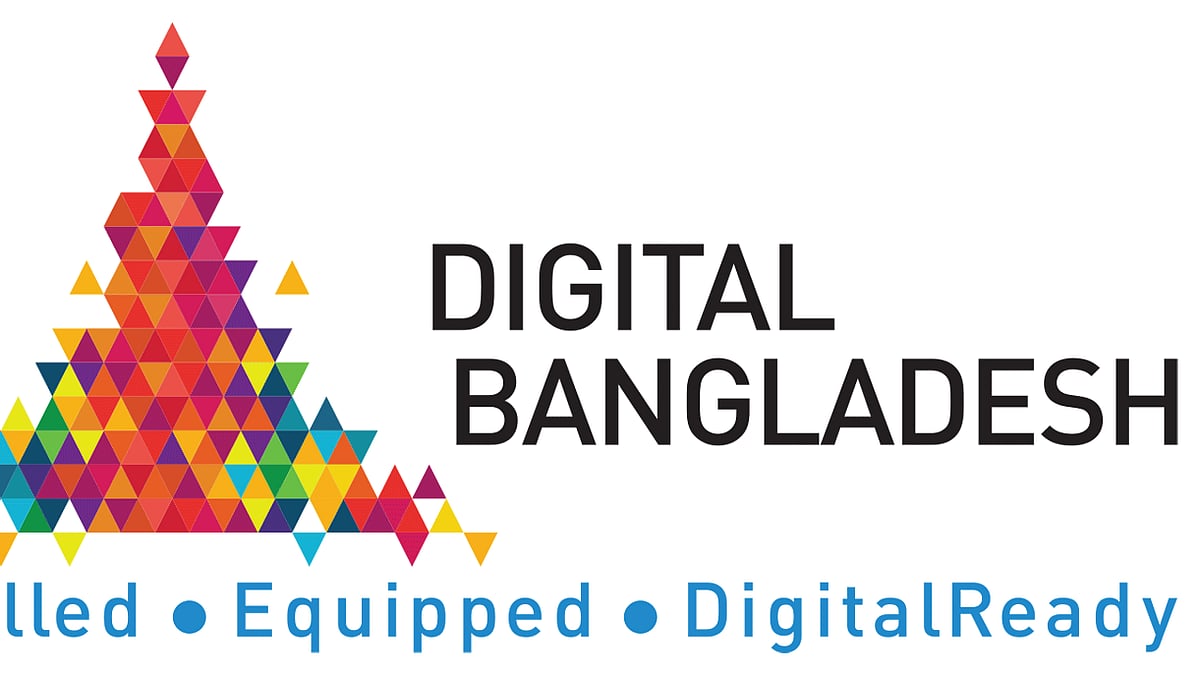Digital Bangladesh Day
Digital Bangladesh unfinished, now govt's new vision Smart Bangladesh

Awami League set some specific goals in 2018 under its Digital Bangladesh vision launched in 2008 and one of the goals was automation of 50 per cent toll collection on road across the country.
Yet, no automatic toll collection system was introduced on a single road under this Internet of Things (IoT) or Internet of Everything (IoE) even at the end of 2022. Long tailback appears on in front of toll booths on highways and bridges during Eid holidays.
Now the government has brought new vision on ‘Smart Bangladesh’ after ‘Digital Bangladesh’ vision.
People concerned said many things have been done under digital Bangladesh; government service has been computerised, financial transaction has become very easy, use of internet spread widely; overall people’s livelihood has become easier than before.
However, people concerned said those specific goals that the government had announced have largely not been achieved. Progress is low through digital system to curb corruption and ensure transparency and accountability.
Bangladesh lags behind in digital service comparing to its neighbouring and many other counties. Internet speed, for example, is low in Bangladesh. Smartphone is necessary to receive digital service, but Bangladesh sees less use of smartphone than India, Pakistan and Nepal.
Monday, 12 December, marks Digital Bangladesh Day. Theme of the day is ‘Advanced Technology Inclusive Development’. Yet, digital divide is acute between the city and the rural areas. Children attended online class in cities during coronavirus pandemic while children were deprived of it in the rural areas.
However, state minister for information and communication technology (ICT) Zunaid Ahmed Palak said the government is 100 per cent successful in the achievement of Digital Bangladesh. Government services have reached people's door; technology-based industry has expanded.
Entire system went online during the coronavirus pandemic, he said adding, four things – artificial intelligence, robotics, design and manufacture of microchip, and cyber security -- will get importance in smart Bangladesh.
Vision and mission
The National Information and Communication Technology (ICT) policy stating a set of specific objectives was formulated in accordance with Digital Bangladesh vision announced in 2008. The policy was last updated in 2018, incorporating 333 specific objectives.
The ICT policy states all government services will be accessible through digital device from anywhere easily, transparently, cheaply and in short time. People concerned said government service has been computerised, but not digitalised.
Birth registration form, for example, is available online now, but it needs to be printed out. People have to stand in queue for hours at Bangladesh Road Transport Authority (BRTA) office for at least three times to get a driving license. Persons having a national identity (ID) card are not supposed to give fingerprint to receive a driving license, but they have to do so.
Bangladesh Investment Development Authority (BIDA) has launched one-stop service (OSS) centre, but it is not working effectively. On top of that, human resource has increased in the ICT sector of the country, but question remains on the quality of their skills.
Speaking to Prothom Alo, Bangladesh Association of Software and Information Services (BASIS) president Russell T Ahmed said, “Overall development has taken place because of Digital Bangladesh. We have touched everything, but there is no room for self-satisfaction. It is necessary to think what more we could do.”
State of indices
Various indices reflect the state of digitalisation in Bangladesh. One such index is E-Government Development Index (EGDI). This index released by the United Nations in every two years consists of three dimensions of e-government, namely: provision of online services, telecommunication connectivity and human capacity.
According to the 2022 index, Bangladesh ranks 111th among 193 UN member countries and the country is ahead of Pakistan, Nepal and Vietnam, but falls behind India and Sri Lanka.
Bangladesh ranks 88th position among 131 countries in the Networked Readiness Index (NRI) of the World Economic Forum, but falls behind India, Sri Lanka and Vietnam. The index highlighted some strengths including rate of internet use, affordable price, investment in telecommunication services, and reducing discrimination on digital transaction in city and rural area while the weaknesses are e-commerce policy, gander based gap in use of internet and quality of control.
According to UK firm Cable.co.uk, Bangladesh ranked 5th among 233 countries in terms of mobile data prices, falling behind India, Sri Lanka and Nepal.
Bangladesh ranked 141th among 141 counties in terms of mobile internet speed, according to Ookla, a firm that scores internet speed. There are about 110 million mobile internet users in Bangladesh. Yet, the country falls behind all South Asian countries in mobile internet speed.
‘Half digital’
The government has formed a taskforce to implement the "Smart Bangladesh" vision by 2041. The objectives of this vision is to create smart citizen, society, economy, and form smart government as well as transformation of education, health, agriculture and financial sectors to smart system.
When asked about Digital Bangladesh and Smart Bangladesh, Dhaka University’s Information Technology Institute professor BM Mainul Islam said Bangladesh has largely become half digital.
If an opportunity is created to fill up a form, an entire system cannot be called digital, he said adding, artificial intelligence (AI), robotics, IoT, and cyber security will be the focus of smart Bangladesh and that requires not only infrastructure but also skilled work force.
*This report appeared in the print and online edition of Prothom Alo and has been rewritten in English by Hasanul Banna